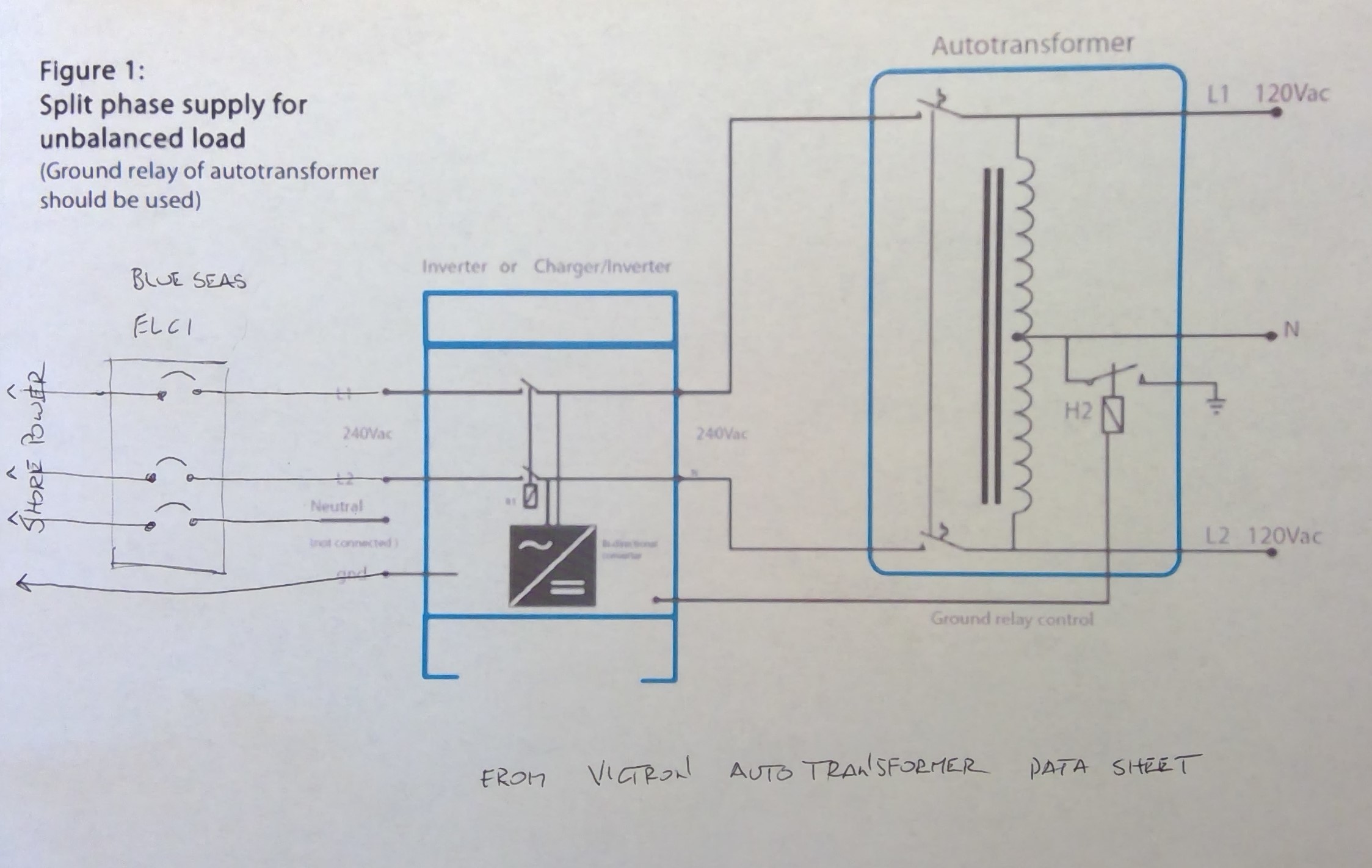Victron Autotransformer 120/240 100A used in a marine application. This is on a USA based boat in conjunction with a Quattro 24/5000/120-100/100 230vac. The neutral from all sources is abandoned, so we input to the Quattro the L1 and L2 from either the marina or our generator. The auto transformer ground relay is connected to the Quattro and grounds the created neutral when the inverter is providing the power. While connected to shore power the other day I inadvertently Grounded the autotransformer created neutral and got a small spark and the ELCI Equipment Leakage Circuit Interrupter on the shore power inlet tripped. So I measured voltages in the boat while on shore power at the same marina today as follows:
L1-G 123.6v
L2-G 124.2v
L1-L2 214v
L1-N (created by AT) 109.5v
L2-N (created by AT) 103.9v
G-N 62.5v
I see why I got a spark and tripped the ELCI. The system has been working well for about three years now, but I would never connect a neutral to ground normally on the boat. Is this normal?

